Basil is an aromatic household herb. Fresh basil is great for seasoning meats, salads, soups, and pasta, among other dishes.
For this reason, there has been a demand for fresh basil in almost all kitchens, from small ones at home to Michelin star-rated restaurants.
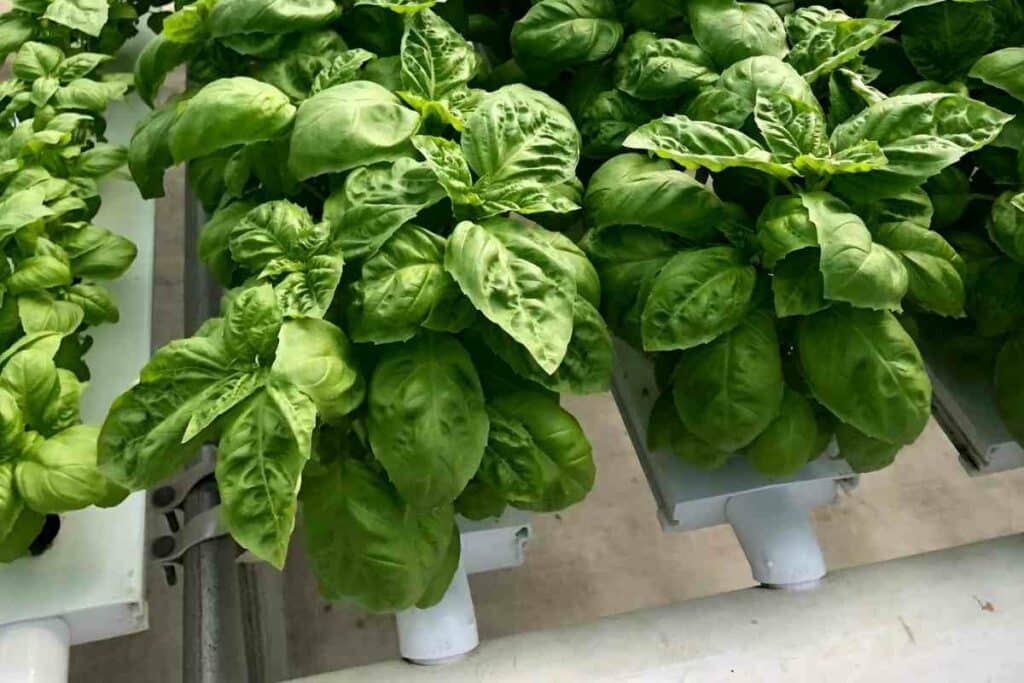
One of the best ways to get basil fresh in your kitchen is to grow them yourself. Hydroponics is a good solution, even for beginners.
Besides being a dirt-free approach to growing basil, you can produce a significant amount in small home spaces.
What is Hydroponics?
Hydroponics is a farming method involving growing plants in gravel, sand, or a liquid and adding nutrients without using soil.
Since the technique does not involve soil use, you have to add the nutrient mixture to the water.

So, the water will hydrate and supply oxygen to the plants while carrying nutrients.
Plants can get carbon and hydrogen from the environment or through water exchange.
This technique is excellent for growing basil for several reasons, including:
- Control – You can regulate the pH, light, air, temperature, tilth, microorganisms, and more when using hydroponics compared to growing your plants in the soil.
- Less water – At a large scale, hydroponics reduces water consumption by up to 90% of what a same-sized farm will use to water the crops.
- Continuous production – You will not depend on seasons to grow plants and will have continuous production throughout the year.
- Diversity – Hydroponics allows you to grow plants anywhere.
- Fewer toxins – By controlling weeds, pests, and insects, you use fewer herbicides and pesticides on your plants, meaning healthier produce.
However, there are some challenges you face with hydroponics.
Some of these include:
- It has a negative environmental impact due to the large amounts of plastics used for piping and growing.
- Systems can be highly vulnerable.
- Mineral content may vary from plants grown in soil.
Why Hydroponic Basil Thrives
When you consider growing your basil on hydroponics, you can expect a bountiful harvest with proper care and nutrients.
This is because basil easily thrives in hydroponics.
For basil to thrive, you need to expose it to plenty of sunshine, warm weather, moist environs, and lots of nutrients.
Most importantly, the plants need unrestricted airflow and minimal fungal infection exposure. That is precisely what hydroponics offers your plants!
You can achieve good aeration, optimal climate control, and reduce competition by eliminating weeds.
Most Importantly – Hydroponics have little vulnerability to pests, and with proper care, you can grow your basil without fungal infections.
The perfect intertwining of basil needs and benefits of hydroponics makes them an ideal match, and hence the plentiful produce.

7 Tips For Growing Hydroponic Basil Quickly
Growing herbs in hydroponics are simple, even for beginners.
However, to increase your chances of success with hydroponic basil, here are some tips for you.
1. Make the containers pitch black
You may decide to do a small DIY hydroponic project at home and use mason jars to grow your basil.
In this case, you will want to paint the jars pitch black to discourage algae growth in the nutrient solution.
You can use black spray paint or cover them with washi tape. Light-blocking fabric sleeve is another alternative.
2. Maintain Optimal pH and TDS Levels
The optimal pH for growing basil ranges between 5.8-6.2.
TDS ranges from 700-1120 ppm. You should regularly check your nutrient solution to ensure it is within limits.

However, if it spills over the extremes, you can use corrective methods like pH-correcting chemicals.
Read More – Best pH Level for Hydroponic (Hydroponic pH Level Chart)
Proper TDS levels are essential for plants to thrive. Too little and your plants will not have enough nutrients; too much and your plants may be overwhelmed.
You can raise TDS levels by dissolving more nutrients into the water or lowering it by adding clean, fresh water into the solution.
3. Prune the basil
One of the best ways to maintain your hydroponic basil is to prune it when necessary.
It would be best to start pruning when the plant develops second leaf nodes.
As basil grows, the fresher leaves will be at the top. So, be sure to remove the dry or drying leaves that are not receiving enough sunlight at the bottom.
By Pruning – You allow the basil only to use the nutrients on the healthier leaves and be more flavorful. The basil plant can also maintain its shape as it grows.
4. Maximum sunlight exposure
Soil-grown basil needs 6-8 hours of sunlight.
However, hydroponics basil requires at least 14 hours of sunlight each day. Basil likes soaking in the sun.
So, direct sunlight is the best. However, direct sunlight is seasonal. That means that the light intensity and length will reduce throughout the day.
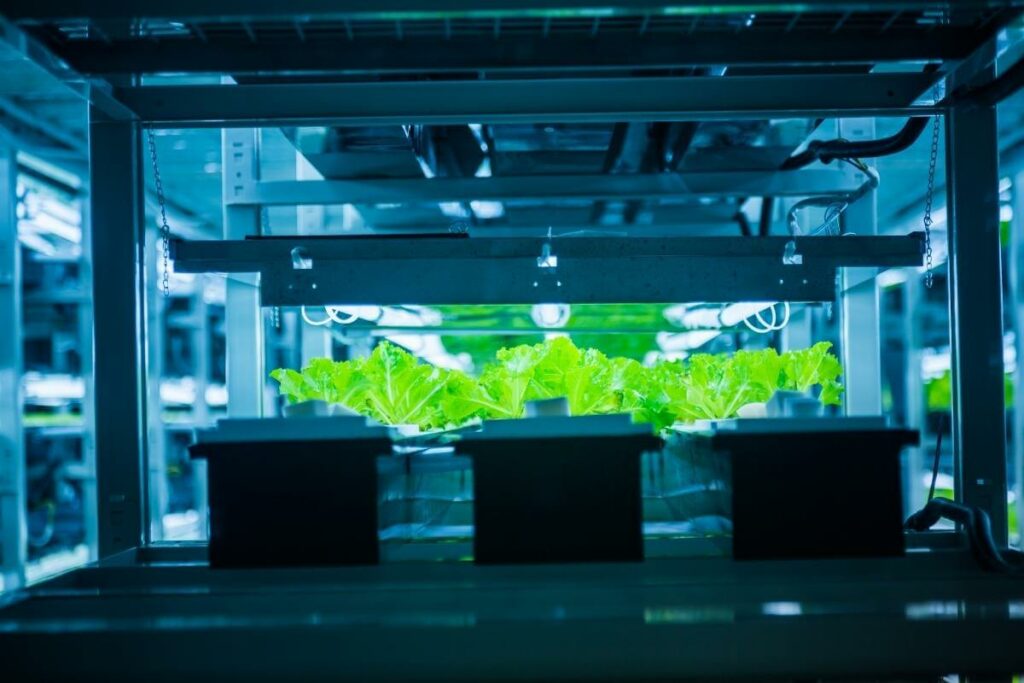
A perfect alternative is to use growing bulbs.
Your basil will not know the difference with the right type of light. Some bulbs produce visible light similar to the sun’s (390-700 nm in wavelength), and you can use them to grow your basil.
However, if you want to get the best out of your artificial lamps, you need to match:
- the spectrum (blue and red)
- intensity (brightness and energy released)
- and duration that your plants will face the light in a day
5. Optimal warmth for your basil
Too little heat for your hydroponic basil means they cannot photosynthesize properly.
On the other hand, too much heat results to wilting or death.
Therefore, it is essential to maintain optimal temperatures for your plants to grow.
These temperatures will range between 65 to 75 degrees Fahrenheit. You can achieve these temperatures by covering the plants to create humidity domes.
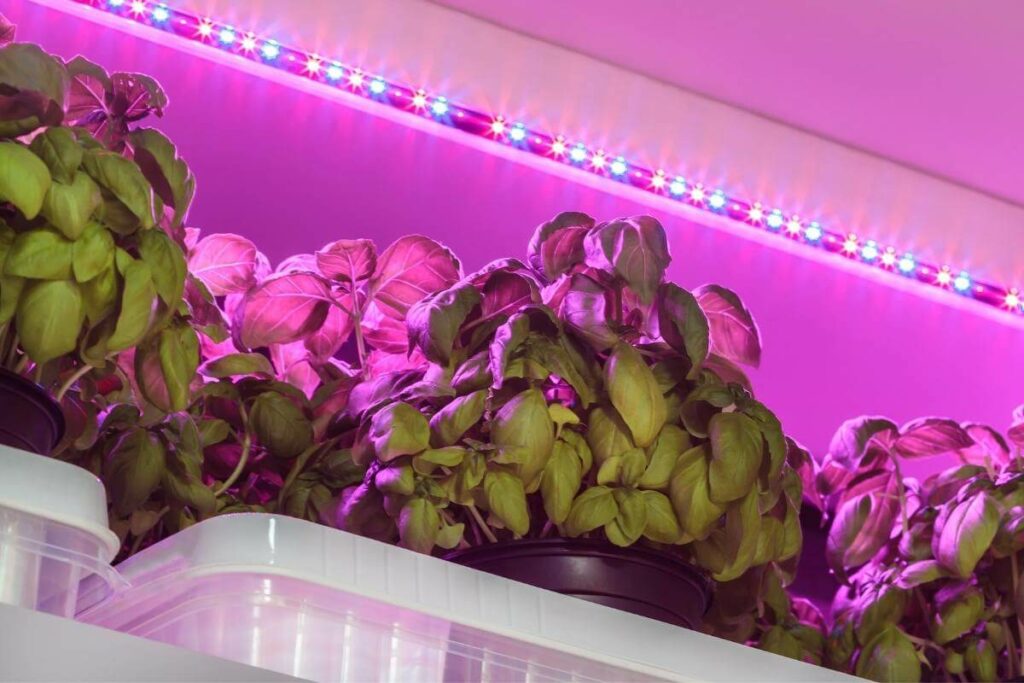
The temperature also applies to the nutrient solution. Remember, warm water carries less oxygen compared to cold water.
And since oxygen concentration directly relates to the plant’s growth potential and nutrient absorption, maintaining optimal water temperatures is crucial.
Moreso, warm water provides the perfect breeding grounds for bacteria and fungi.
On the Other Hand – The too cold water could cause your plants to shut down. So, be keen to maintain the temperatures of the nutrient solution optimally.
6. Proper watering
It is very easy to ignore the water levels in your hydroponics farm.
However, you should avoid this grave mistake by regularly topping up the water levels in your systems.
As basil matures, it consumes more water during its photosynthesis and mineral uptake processes.
This reduces the water levels and sometimes raises the TDS value. Make sure to add water (considering the TDS and pH) at least once every 5-7 days.
Once the basil grows, you can slowly transition them to regular watering.
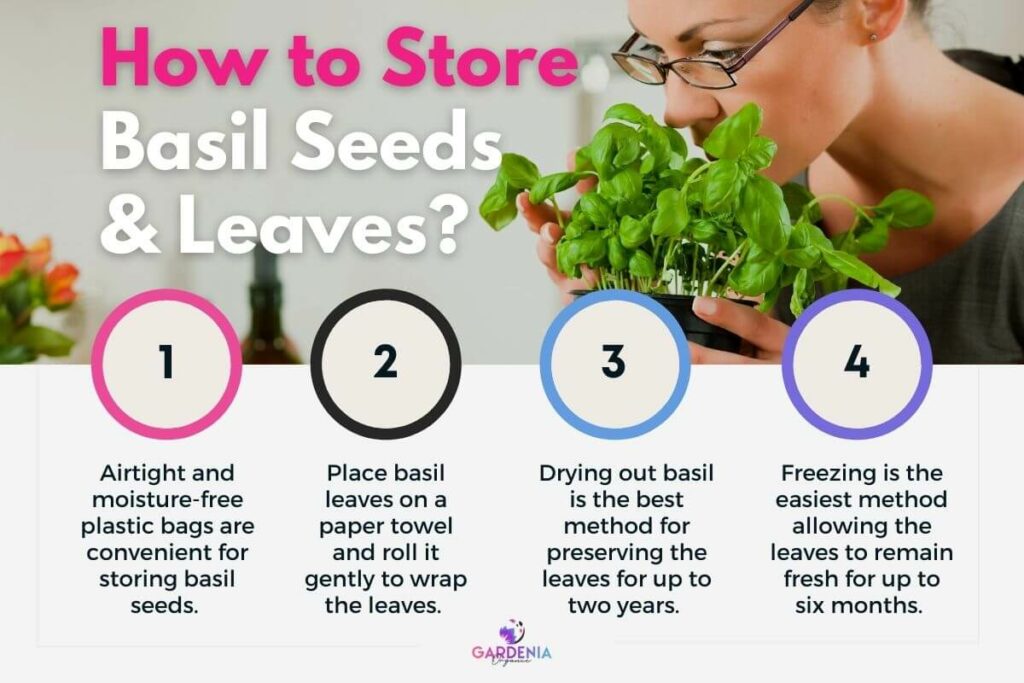
7. Use the correct nutrient solution
With the right nutrient combination, you will have shiny green basil leaves.
The leaves are plump with nutrients and rich in aroma as well.
For this, you will need a particular green leafy plant nutrient mixture that delivers all the nutrients you need to grow your plants.
The nutrient solution you get should have a mix of potassium and calcium.
A ratio of 1:1 will produce basil with oil and flavors in the leaves and branches.
Nitrogen is another requirement for yielding more leaves with a deeper color.
Magnesium is vital for the composition of oils, flavor, and aroma.
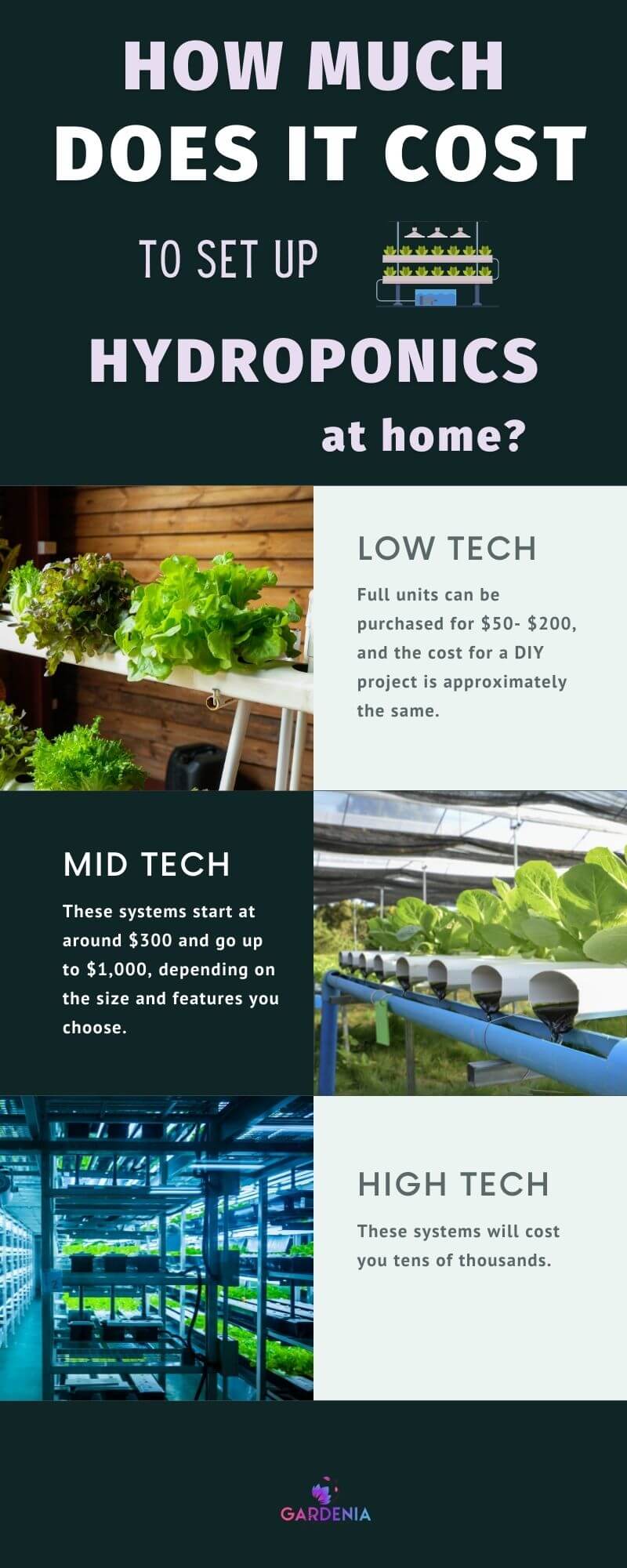
Frequently Asked Questions
How long does hydroponics basil take to grow?
Basil matures quickly. The seeds take about a week to develop roots, which you can transplant from your planter to the hydroponics with your favorite growing medium. In just 8 weeks, you can start harvesting your basil.
More importantly, the plant grows more leaves even after harvesting, meaning you can continue cutting leaves until the plant generates seeds.
Is hydroponic basil healthy?
Basil is known for having plenty of health benefits. Basil can even help you lower your blood pressure and triglycerides. Hydroponic basil is no different.
Depending on the nutrients used, you may have more nutrient-packed basil. And since no pesticides are used, you can expect them to have fewer toxins.
Does hydroponic basil need sunlight?
Plenty of sunshine is one of the requirements for basil to thrive.
So, even when you plant your basil in hydroponics, it does not change the fact that the plants will need sunshine to thrive.
Your basil will need at least 14 hours of sunlight in a day to grow quickly. If you will grow them indoors, then LED grow lights will do.
Can you transplant hydroponic basil into soil?
You can transplant your basil from the hydroponics to the soil with proper guidance.
Hydroponics use nutrient solutions that are not readily available in the soil. So, as you transplant the plant, you need to do it gradually to avoid shocking the plant.
Final Thoughts
With climate change, soil erosion, and loss of biodiversity affecting agriculture, new farming methods like hydroponics are the way to go.
With the soilless approach to farming, you can grow your favorite vegetables and herbs in small spaces.
Basil is a perfect crop to grow on hydroponics. It capitalizes on all the advantages of hydroponics since it thrives in warm, humid environments to grow.
In fact, it is one of the most grown herbs in hydroponics. Once the plants mature, you can trim them and continue harvesting them weekly.
The method is quite care-intensive, but the produce is healthy, free from toxins, and bountiful with proper care.


